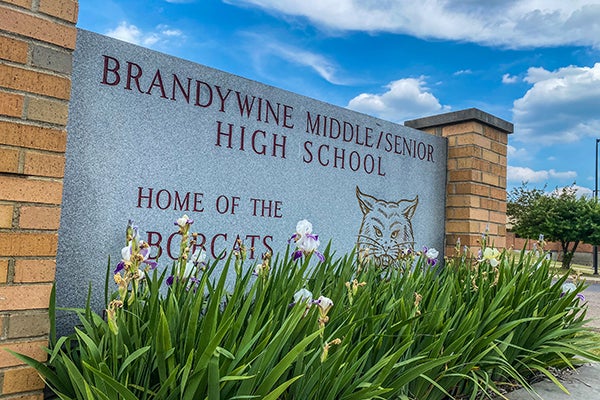Crouse offers former student’s perspective
Published 4:50 pm Sunday, August 11, 2013

SMC Board of Trustee’s Chairman Fred L. Mathews, left, presents Eileen Crouse of Cassopolis with her service pin. She became vice president of student services July 1. (Leader photo/Provided)
New Southwestern Michigan College Vice President for Student Services Eileen Crouse offers the Niles Campus a former student’s perspective.
Crouse, of Cassopolis, marked 10 years with SMC at the June 17 Board of Trustees meeting, starting as executive director of community services, then executive director of enrollment management and campus life before assuming her current role July 1. Like SMC, she was born in 1964.
Historically, community colleges sort students into one of two categories, traditional — right out of high school — or non-traditional, older folks returning for additional education or training.
Based on her own background, Crouse, who attended community college in Illinois, prefers “experiential” or “non-experiential.”
Though in their early 20s, they might be well into adult lives of working jobs, raising kids and making car payments.
“Just because you’re 18 doesn’t mean you want to hang out at the SAC,” or Student Activity Center.
She didn’t.
“Experiential want all the great things we have to offer that go into the college experience at a fraction of the price, making friends on a beautiful campus,” Crouse said. “But for others, like me, whether you’re 20, 22 or 32, college was more a means to an end. We had families, we had other things going on and our age had nothing to do with it. When I thought about this campus, which is the preferred campus for many non-experiential students,” compared to the Dowagiac campus opening its third housing facility, “I said, ‘What did I want?’ When I came straight from work I wanted some decent food to eat in a nice space — basically like a business traveler. I’m passing through here for a class, then I want to go home and be with my kids. But while I’m here I want a pleasant space to charge my phone and prep for my class. That’s why this lobby looks more like a hotel than a kids’ college campus with Roadrunners. Like a hotel, I thought about amenities, concierge service and extended hours. We’ll make our hours based on when they need our services, treating students like paying customers.”
Staff and faculty in a row of cubicles radiate from the commons like spokes on a wheel so needed information can be obtained immediately. It flows into a learning center with banks of computers and tutoring and a science lab.
“In the Wood Building (on the Dowagiac campus), which has its own commons, we noticed faculty hung out there to talk to and help students,” she said. “If you’re going to teach at a community college, you better have a passion for teaching and helping students. Everything (Dr. David Mathews) does, he starts with the student and works backward, which is a unique gift of having him as president.”
“I was a Niles Campus student,” Crouse said. “The truth is, I parked by the door closest to my classroom, made a beeline in and a beeline right back out because they didn’t have good vending or comfortable seating. My husband’s (Jack) been on the SMC faculty for 20 years. I started at community college in Illinois, got most of it done, and I went to an intense one-year business trade school in Chicago. I started my career in customer service, which led to sales, then community services at SMC. I moved here when I was 24.”
The Chicago native graduated from Fox College in Oak Lawn, Ill.
Before joining the college, Crouse worked for Playing Mantis of Mishawaka, Ind., for six years and Heath/Zenith of Benton Harbor for five years.
Both her children, Dale and Anne, attended SMC.
While SMC’s 60-percent growth spurt between 2006 and 2010 led to moving the museum into Dowagiac for an expanded bookstore and history gallery, creating a Student Service Center in the former bookstore and mailroom space and now the $3 million facelift of Niles Campus and construction of the third Dowagiac housing unit, the next undertaking will be flipping two of its original three buildings.
The William O’Leary Building for communication, humanities and social sciences, where her husband teaches, will swap roles with the Foster Daugherty Building, which now houses math and science.
The other is Mathews Library, enlarged with conference centers to either side.






